What’s Next for Bolivia After Camacho’s Arrest?
A controversial, high-profile detention reveals deep divides within the MAS and an uncertain path forward amid an ongoing conservative backlash. Luis Fernando Camacho was detained in Santa Cruz on December 28. / Wikimedia Commons
Luis Fernando Camacho was detained in Santa Cruz on December 28. / Wikimedia Commons
This article first appeared in NACLA. Subscribe to NACLA’s newsletter here.
On December 28, Bolivian authorities violently detained the governor of Santa Cruz, Luis Fernando Camacho, because he did not appear to testify in the case known as “Golpe I.” Camacho is accused of terrorism for his role in the October-November 2019 protests that led to the resignation of Evo Morales and to the interim government of Jeanine Áñez.
In Santa Cruz, groups reacted immediately to Camacho’s arrest. They seized two airports, set out to block main highways, and launched a series of demonstrations and clashes with police that have continued each day. More than 10 public and private buildings have been burned, about 30 vehicles charred, several injured, and almost 100 detained.
The tensions between opposition groups in Santa Cruz and the Movement Toward Socialism (MAS) governments of Evo Morales and Luis Arce are longstanding. Camacho is an extreme right-wing businessman who has led the Santa Cruz civic committee since 2013, becoming its president in 2019. In 2020, he ran for president and obtained 14.07 percent of the votes in the race against Arce, who won the election with 54.73 percent. In 2021, Camacho was elected governor of Santa Cruz with 55.64 percent of the vote. At the end of 2022, Santa Cruz civic leaders held a 36-day strike demanding an early census that Arce’s government had postponed from 2022 to 2024 . During this conflict, a fight within the MAS between Morales and Arce became very visible.
After his arrest, Camacho was transferred by helicopter to La Paz and handed four months pre-trial detention while investigations on the Golpe I case continue. The government has asked for the pre-trial detention period to be extended to six months, and organizations linked to the MAS have held marches at the government headquarters as well as vigils aimed at making sure the governor of Santa Cruz “does not escape” and receives a maximum sentence of 30 years.
According to the government, Camacho’s detention is about doing justice for the deaths at Sacaba and Senkata, two massacres that left 21 people dead in November 2019 during the first days of Áñez’s government. However, the Golpe I case, in relation to which Áñez has also been detained for 20 months, does not cover these massacres but rather the actions that led to Morales’s resignation.
For the civic and business leaders of Santa Cruz, the arrest amounts to political persecution, “state terrorism,” and an affront to Santa Cruz because Camacho is the department’s highest democratically elected authority. According to these leaders, this is a witch hunt that will lead to the arrest of other opposition leaders.
In this context, let’s analyze three possible scenarios.
During Morales’s first administration (2006-2009), the confrontation between eastern elites and the government was resolved mainly through democratic processes.
Government strategists are betting on a scenario of wear and tear on the mobilization in Santa Cruz. The government detained Camacho mainly because of an internal dispute within the MAS. Morales wants to run again for president in the next elections and Arce is his main opponent. Morales and his allies have accused the Arce’s government of covering up drug trafficking, corruption, and making agreements with Camacho’s right wing to approve the census law that put an end to the 36-day strike in Santa Cruz. Camacho’s arrest halted the condemnation of the Arce government by a large segment of the MAS, but it did not calm the criticisms from Morales or his operatives.
For the government, Camacho seemed worn out after the census strike, but his arrest has reinvigorated his leadership and the more conservative forces behind him. Far from weakening the extreme right, the arrest has strengthened and repositioned it in Santa Cruz and on the national scene.
Civic leaders in Santa Cruz propose a strategy of long-term struggle through blockades, surprise actions, confrontations to wear down the police, and actions to impact the country’s economic stability.
Arce’s strategists believe that they can weaken this resistance through the logic of the carrot and the stick. On the one hand, they are intensifying actions against Camacho, threatening to arrest other opposition leaders and transferring more police to Santa Cruz. On the other hand, they want to neutralize Santa Cruz’s business sector, and so they are not ruling out offers to grow genetically modified crops, expand the agricultural frontier, conduct unlimited exports, and other demands longed for by agribusiness. Some businessmen may accept the carrots as they have in the past (2010-2019), but it is unlikely that most of the business sector will abandon Camacho.
In this confrontation, Santa Cruz seeks to use its economic weight to push the government back. When it came to detaining Camacho, the government did not take this dimension into account. With the support of large segments of Santa Cruz’s population, elites and business sectors are impeding the shipment of food to the rest of the country, proposing to not pay taxes, withdrawing departmental contributions to the police, stopping exports that generate foreign currency, and taking other measures that may affect the economy and the banking system.
These measures will increase the pressure on inflation and the devaluation of the boliviano currency in a context where international reserves have fallen from 15 billion to 3.8 billion dollars in the last seven years. Arce’s most precious achievement is the economic stability of the country (Arce served as economy minister under Morales). If the confrontation continues, inflation could skyrocket, and we could be facing the beginning of a devaluation of the boliviano. If that happens, the government will have to face conflicts not only in the east, but also in the highlands, starting with the city of El Alto.
The second scenario, which some sectors of the MAS are considering, would be a declaration of a state of siege and militarization of Santa Cruz. This occurred in the department of Pando in 2008, when the Morales government declared a state of siege over a conflict with the departmental government, in which up to 19 people died, although the details have not been fully investigated. However, it is one thing to militarize a city of less than 50,000 inhabitants such as Cobija, the capital of Pando, and another to militarize a city of almost 1.5 million people such as Santa Cruz de la Sierra. A state of siege in Bolivia’s largest department would only breathe new life into the resistance and further unite broad sectors of Santa Cruz and beyond against the government, bringing Bolivia to the brink of suicide.
During Morales’s first administration (2006-2009), the confrontation between eastern elites and the government was resolved mainly through democratic processes within which conservative sectors were losing dominance: the 2006 Constituent Assembly elections, the 2008 recall referendum that Morales survived, the 2009 referendum on the new constitution, and the 2009 presidential elections.
The April 2009 murder of three foreigners during a police raid at the Las Américas hotel in Santa Cruz de la Sierra—which according to a report by the Inter-American Commission on Human Rights amounted to human rights violations at the hands of the Bolivian state—fractured Santa Cruz elites between those who accepted the carrot and those who ended up in exile or in jail. Starting in 2010 and up until his reelection attempt in 2019, Morales and his government granted several concessions to businessmen from the east, such as not taking steps to restrict genetically modified seeds or biofuels, not verifying that large properties complied with using land for a social function, and allowing the export to China of meat with serious deforestation impacts. The business sector of Santa Cruz was the last to join the call for Morales’s resignation in 2019, and since then the tensions between the two camps have been growing.
The third scenario would be for the government to back down on Camacho’s arrest. This is a very complex scenario for the government because it would mean defeat in the internal dispute within the MAS and in the dispute with reactionary sectors of the Santa Cruz opposition. Morales would use such a decision as evidence of a Camacho-Arce alliance. Various sectors of the MAS would mobilize against the government, fueled by a cry from Morales of treason. Arce is between a rock and a hard place, and Morales is the rock.
The truth is that behind the danger of suicide in Bolivia, Morales’s ambition to be reelected at any cost continues to be very present.
The serious problem in Bolivia is that there is no judiciary or prosecutor’s office that is independent of the executive branch. Those responsible for delivering justice shift to accommodate the government in power. This is what happened during the last Morales governments, during the short-lived Áñez government, and currently under Arce. In Bolivia, the instrumentalization of justice ends up delegitimizing justice and making it difficult to achieve.
From the beginning, Arce should have sought to form an impartial truth commission and a team of competent prosecutors and judges, not puppets of the executive, to investigate the tragic events of October and November 2019. Only in this way would it be possible to do justice for the victims of Sacaba, Senkata, and other events of 2019.
At first, Luis Arce spoke of reconciliation with justice, and his vice president said that the condor needs both the right and left wing to be able to fly. However, the government did not know how to implement this path. Instead of exposing Morales’s revenge rhetoric, Arce ended up replicating it and falling into the dynamic of seeing who is tougher with respect to the Right. The government also did not seek to learn from other examples, such as in Colombia, where President Gustavo Petro proposes peace even with armed extreme right-wing paramilitary groups.
The truth is that behind the danger of suicide in Bolivia, Morales’s ambition to be reelected at any cost continues to be very present.
The situation is extremely complex and changing, and it could quickly escalate and become uncontrollable. To face this danger, we have to think with a cool head, sit down to talk, look for alternatives, and put life and general well-being before petty political calculations.
Your support matters…Independent journalism is under threat and overshadowed by heavily funded mainstream media.
You can help level the playing field. Become a member.
Your tax-deductible contribution keeps us digging beneath the headlines to give you thought-provoking, investigative reporting and analysis that unearths what's really happening- without compromise.
Give today to support our courageous, independent journalists.

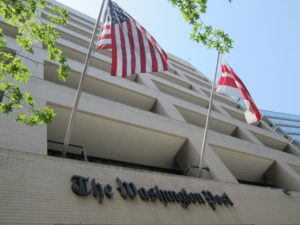
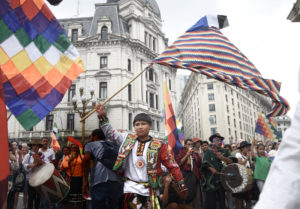
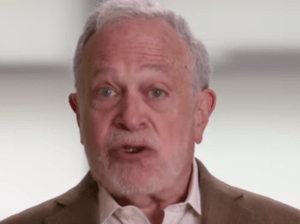
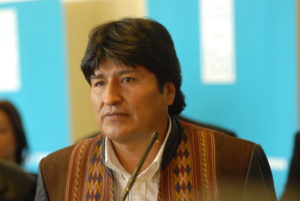
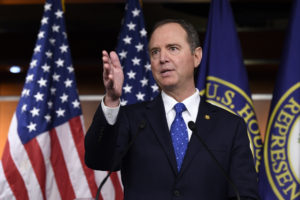
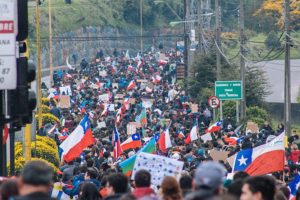


You need to be a supporter to comment.
There are currently no responses to this article.
Be the first to respond.